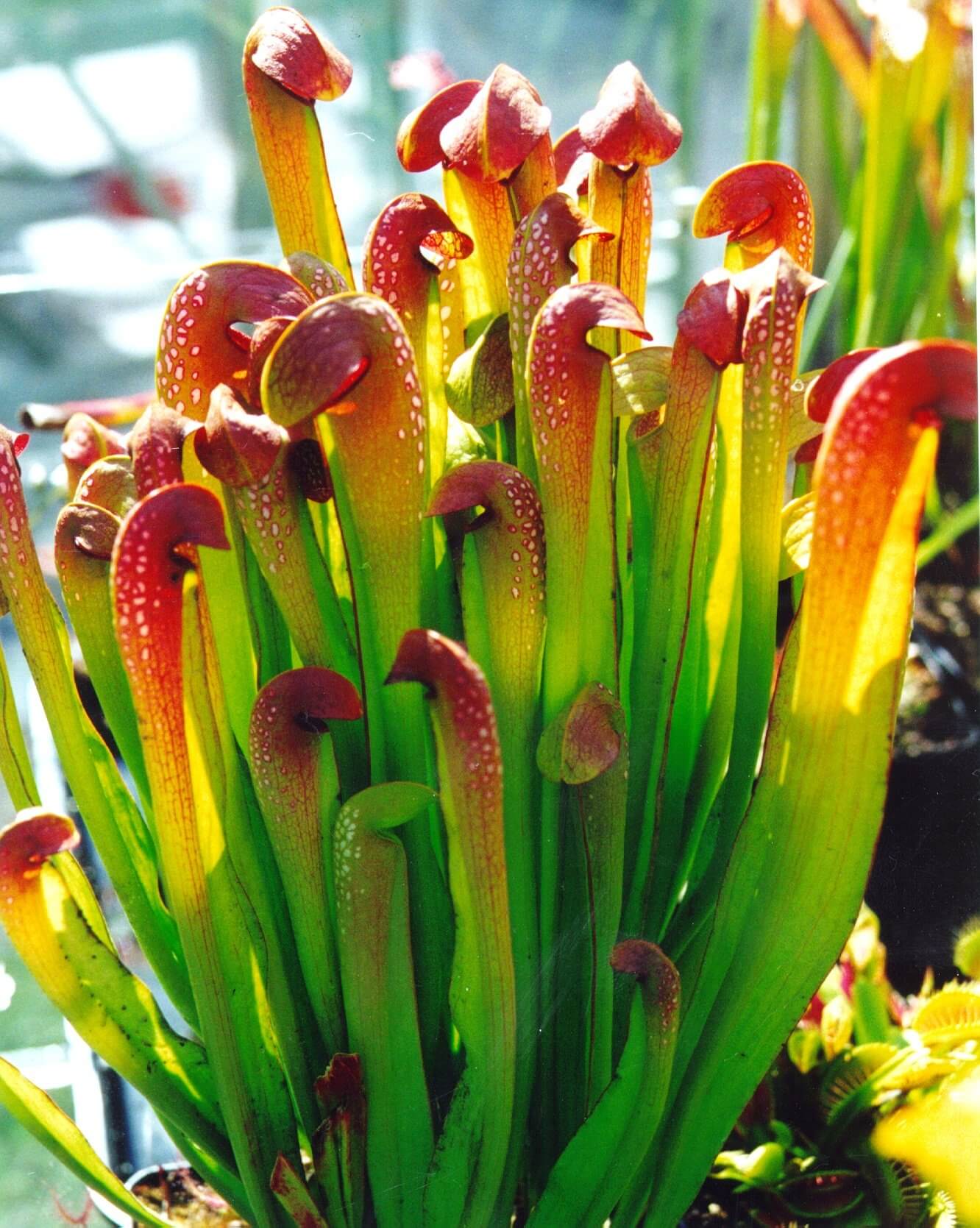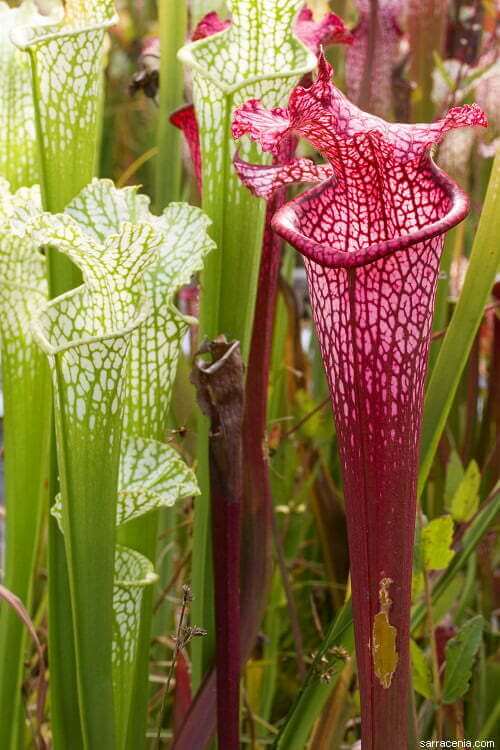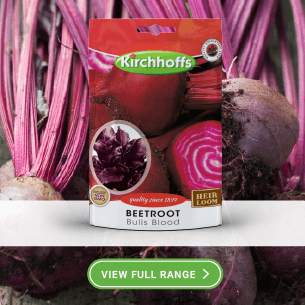Trumpet pitcher plants are a species of carnivorous plants that originate in North America. Seven of the eight known species are confined to the south-eastern coastal plains of the United States of America. The eighth species, Sarracenia Purpurea continues west and north well into Canada. A few subspecies (for example Sarracenia Rubra and Sarracenia Purpurea) can be found further inland in mountainous regions such as the Appalachian Mountains.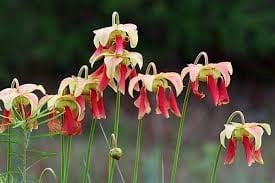 The typical habitat of Trumpet pitchers is warm and temperate. These plants are perennial and require a distinct winter and summer period to flourish. Over the colder months, when there is little or no prey, they go through a short rest period or dormancy. Just prior to and during this period, all the excess nutrients are absorbed into the plant’s underground rhizome. At this time, the plant’s pitchers (trumpets) slowly start to die back and dry out. During spring and the onset of the warmer months, the plant produces large, unusual, long-lasting flowers followed by flourishes of even larger, strikingly- coloured pitchers.
Predation also carries on after dark as the secretion area of the plant glows bright blue at night making a “landing strip” for potential prey. This can only be seen by insects and by humans using an ultra-violet light. Trumpet pitchers are passive hunters. They lure their prey by using a combination of bright colours, delicious nectars, appealing smells and false pheromones. These mechanisms attract the insects and invite them to land on the secretion area of the pitcher. The insects attempt to feed on the sweet nectar at the top (mouth) of the pitcher. This nectar contains a minute amount of a mild narcotic/sedative/paralyzing agent called coniine Trumpet pitcher plants have a very efficient protein to nitrogen conversion rate so they actually need very few insects to survive for an extended period of time. They will however continue eating and growing continuously when a large food source is available. A large bushy trumpet pitcher plant can catch more than one hundred flies per day every day as insects proliferate in densely populated urban areas
Content contributed by |








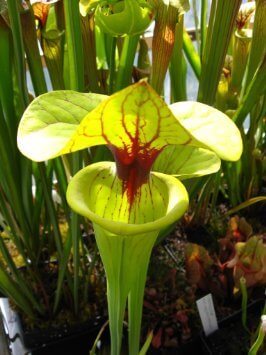
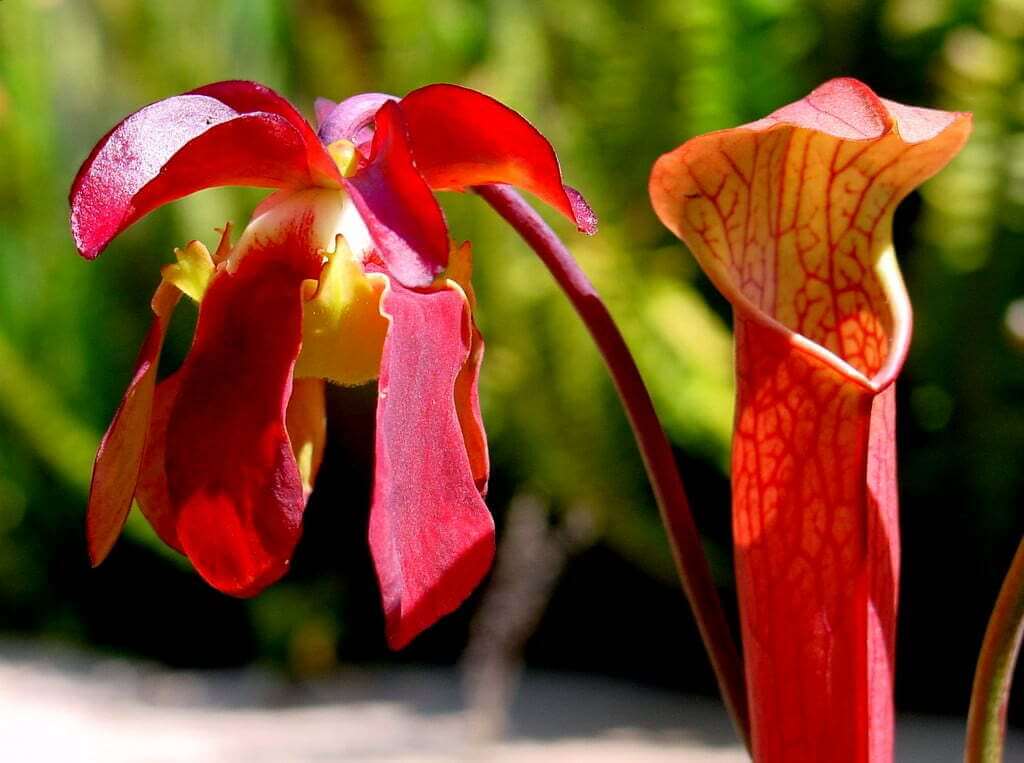
 that will eventually cause the prey to stumble or slide into the slippery opening and down the inside of the tube. Thereafter, downward pointing hairs steer the prey to a pool of digestive juices. At this stage, the protein of the insect is converted into nitrogen, which the plant absorbs leaving only the remnants of the insect as a dried powdery husk that has no unpleasant odour. This meal encourages the growth of more and larger pitchers.
that will eventually cause the prey to stumble or slide into the slippery opening and down the inside of the tube. Thereafter, downward pointing hairs steer the prey to a pool of digestive juices. At this stage, the protein of the insect is converted into nitrogen, which the plant absorbs leaving only the remnants of the insect as a dried powdery husk that has no unpleasant odour. This meal encourages the growth of more and larger pitchers.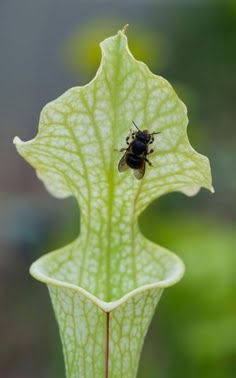 during the warmer times of the year. As a result, Trumpet pitchers plants can grow from small seedling sized plants into sizeable, bushy plants in little more than a season. Certain large species and hybrid can grow to more than a meter in height and have mouths the size of beer mugs. A single pitcher has been found to contain more than a thousand dried up and crumbling insects. During times of infestation pitchers can become so full of dead insects that they fall over or the pitcher can rot off halfway due to the intensity of the digestive enzymes.
during the warmer times of the year. As a result, Trumpet pitchers plants can grow from small seedling sized plants into sizeable, bushy plants in little more than a season. Certain large species and hybrid can grow to more than a meter in height and have mouths the size of beer mugs. A single pitcher has been found to contain more than a thousand dried up and crumbling insects. During times of infestation pitchers can become so full of dead insects that they fall over or the pitcher can rot off halfway due to the intensity of the digestive enzymes.